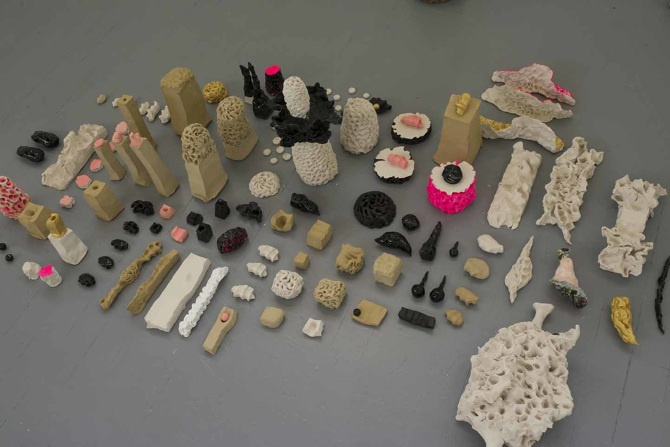RENDEZVOUS
PGDipFA 2015

RENDEZVOUS 2015 ‘excavates primordial totems’, as we move through the Anthropocene, the epoch where human activity took dominant effect on the environment. Navigating fetish and value in times of late capitalism and environmental dystopia. These bodies of subverted totems, look to L ‘informe’s interest in destroying categories and knocking art off its metaphorical pedestal. Interested in an esoteric, or Dada-esque poetry of connection and touch, converses between forms that could have come from a strange exotic, maybe pre-historic, jungle. Often sexualized, sometimes seductive, these curious entities evoke an uncanny juxtaposition between biomorphic, anthropomorphic or monstrous forms. Tensions draw between logic and alternate measures. They employ the scientific practice of fieldwork and archaeology, juxtaposed with an exploration into the expanded field of sculpture and post – minimal practices (eco- feminism, land art etc). Timothy Morton suggests a re-evaluation of ecological thought, looking past the construct of “nature” towards “Dark ecology”, somewhat like the abject of ecology, its “irony, ugliness and horror.” Morton looks towards a perspective that embraces diversity, magic and the abject, and is weary of human refinement and ideals.